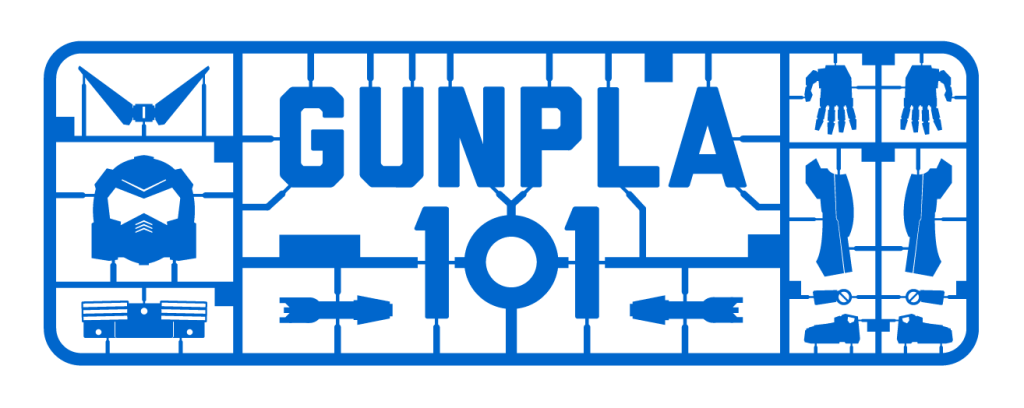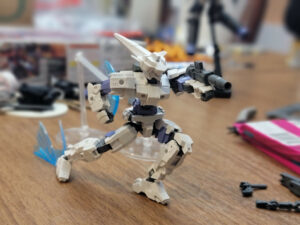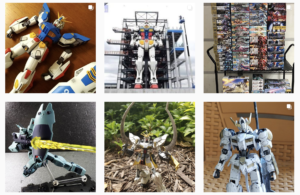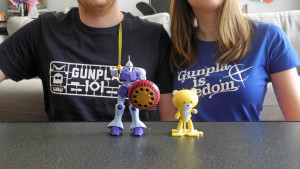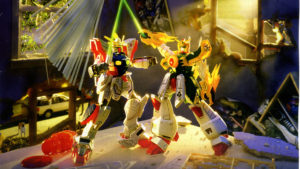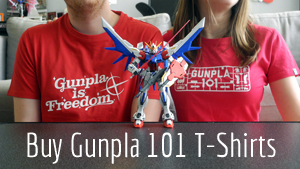
Today, Gunpla building is easier than ever. You can buy Gunpla kits and tools online and have them shipped to your doorstep, no matter where you live in the world. However, it wasn’t always like this. Once, Gunpla were considered toys for kids and advertised with the now-archaic “skill level” marketing. Now, Andres shares how he joined the hobby more than 30 years ago.
Although I was born just a month before the original Gundam series began airing in ’79, it would be nearly 20 years before a coworker put a beat-up VHS in my hands that had one episode of War in the Pocket. The footage was grainy, and there was no subbing or dubbing, but I didn’t care.
Very few places rented anime back then. I’d have to take the commuter rail out to Cambridge and bum around Harvard Square. Spending the day between Anime Crash and Tokyo Kid, hoping that there were some new subs by Ctenosaur or S. Baldric. I’d always been a toy collector, so I was happy to find imported plunder. As I browsed these ‘90s era shops, I started noticing these model kits… but I’m getting ahead of myself.
See also: How Gunpla First Came To America
I grew up about an hour from Boston in the ‘80s, right when the FCC relaxed programming restrictions on children’s programming. This led to a boom in western animation, a vacuum so vast that Japanese animation was drawn into the ever-widening market. This was the earliest days of localization, an entertainment Wild West.
Tonka had brought over Machine Robo as Go-Bots to decent success, only to be floored by the runaway success of Transformers. This opened the floodgates to much and more imported animation, specifically Super Robot fare like Mazinger Z, called Tranzor Z here for a hot minute. Also examples of the newly emerging Real Robot genre, mostly represented by Robotech. This was where I’d avidly started collecting toys. I’ve barely slowed down since.
By the ‘90s, I’d gotten into comic books and then collecting assorted action figures by Toy Biz. Around this time, there was a magazine called Wizard for all things comics. I was an avid reader of that and Toyfare magazine, a spinoff of Wizard that thrived in the overwhelming toy-collecting market. The staff of Toyfare, years later, created Robot Chicken with Seth Green.
Toyfare went on to become a major resource to the toy-collecting community of the time. There were plenty of cruel memes here, but what really grabbed me was the magazine’s monthly showcase of custom action figures submitted by readers. Coupled with my growing interest in painting wargaming miniatures, I’d begun doing my own projects, slowly learning as I went. I found out later that this was called “kitbashing” in some circles. Now, I just needed some kits, luckily the ‘00s started strong and kits were just around the corner.
In the early ‘00s, things started really cranking. Toyfare Magazine, in its 97th or 98th issue, had done an article about the greatest action figures of all time and placed the Perfect Grade RX-78-2 as #1. Cartoon Network began airing Gundam Wing, and at the same time, Gundam models showed up on the shelves at Toys R Us. The model kits were over on the far side of the store where the bathrooms and breakroom were. Back then, this was a no man’s land for collectors. I’d long ago decided that Testors paints were no good for my work, having long since been using Citadel acrylics. No, there was certainly nothing for me down there, right? I couldn’t have been more wrong.
When I finally decided to take a look, I saw crowds gathering and I had to see what was up. I find a number of guys my age working through a pile of small boxes, inscribed with Japanese. The box lids had an English sticker slapped on the front, at first, but in subsequent weeks they’d be localized. I grabbed what my edgy 20-something-self seems to think is the coolest, and thus acquired my first Gundam, a 1/144 No Grade Gundam Deathscythe.
Building this kit scratched an itch I didn’t know I had. Sometime after that, I bought a RX-79 vs MS-06 Zaku double set from Mobile Suit Gundam: The 08th MS Team. I was now irrevocably hooked. The multimedia push known as the Gundam Invasion Tour was well underway: animation, toys, comics, and a traveling museum going cross-country built into a bus! I had a decent time visiting when it was nearby, but the freebie MS War CCG promo for Boston had a GM on it. By that point in my fandom, if it didn’t have a Zeon monoeye I was over it.
I’m often amazed these days when I see all the specialized tools, paints, and waterslides that are available to the modern builder. In the early ‘00s when we finally had Gundam kits at retail in North America, this kind of support just didn’t exist. Even knowledge wasn’t always easy to find. I had to rely on the skills I’d already developed from customizing action figures and painting miniatures. Of course, I’m still learning new skills today.
But at the beginning, I was alone in the void. I’d have to teach myself. To this end, I still rely on many tools, techniques, and paints that can be bought locally. Bought locally, and in many cases, less expensive. Thus, we come to the end of this article, and set up the next, a buying guide to local equipment that is easy to get and easy on the wallet! I’ll be sharing my experiences building early on and acquiring kits right before the HGUC line really got cranking. Word of mouth, trial and error, these were my education. What a ride!
A cranky curmudgeon from Boston with Spacenoid sympathies, Andres is as old as the Gundam brand itself. You can find him on Facebook.
Gunpla 101 is interested in hearing our readers’ stories. Do you have a Gunpla origin story like Andres’ or some insights on your experience in the hobby? Tell us! We pay our writers.
